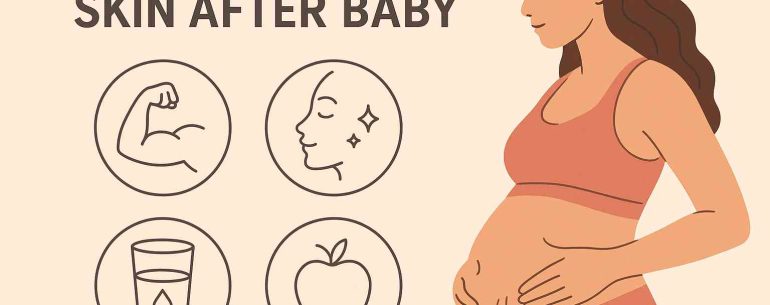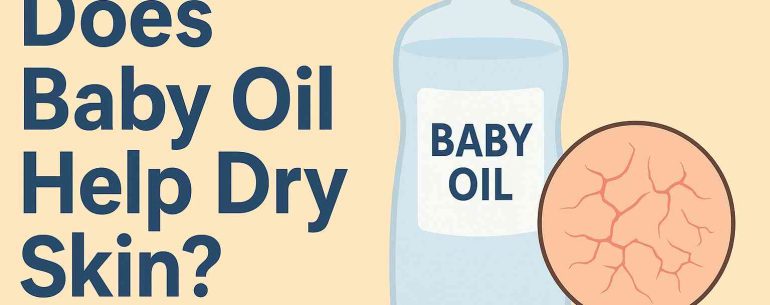How to Tighten Skin After Baby: Safe and Effective Postpartum Recovery Tips
Becoming a mother is one of life’s most rewarding experiences, but it also comes with many physical changes, one of the most noticeable being loose or sagging skin after pregnancy. As your belly stretches to accommodate your growing baby, the skin and connective tissues expand, sometimes beyond their ability to bounce back naturally. The result can be softer, looser skin around the stomach, hips, thighs, and breasts after birth.
While it’s completely normal, many new mothers look for ways to restore firmness and elasticity safely. The good news is that with time, consistency, and a few strategic lifestyle changes, you can help your skin regain much of its natural tone and tightness.
Here’s a complete guide on how to tighten skin after having a baby safely, naturally, and effectively.
1. Understand Why Skin Loosens After Pregnancy
During pregnancy, your skin stretches to make room for your growing baby. This rapid stretching can damage the collagen and elastin fibers that help your skin stay firm and flexible. After birth, when your body returns to its pre-pregnancy size, that overstretched skin may appear looser.
Other contributing factors include:
- Genetics: Some people naturally produce more collagen and elastin than others.
- Age: Younger skin tends to recover faster than older skin.
- Weight gain: The more your skin stretches during pregnancy, the longer it may take to tighten again.
- Hydration and nutrition: Dehydrated skin and poor nutrition can reduce elasticity.
Understanding these factors helps set realistic expectations your skin will tighten gradually, not overnight.
2. Give It Time
One of the most important ingredients in postpartum recovery is patience. Your skin took nine months to stretch, and it may take just as long or longer to firm back up.
In the first few months postpartum, your body naturally sheds excess fluids and fat. As this happens, your skin begins to retract on its own. Many women notice a gradual tightening within 6 to 12 months, especially if they maintain a healthy routine.
3. Stay Hydrated
Drinking plenty of water helps your skin regain elasticity. Hydration supports collagen production, improves skin texture, and flushes out toxins. Aim for 8 to 10 glasses of water daily.
You can also boost hydration through foods like cucumbers, oranges, watermelons, and soups. Herbal teas and coconut water are also excellent choices for nursing mothers.
4. Eat Collagen-Boosting Foods
Nutrition plays a key role in skin recovery. To rebuild collagen and elastin, your body needs specific nutrients. Include these in your daily diet:
- Vitamin C: Found in citrus fruits, strawberries, and bell peppers, it helps produce collagen.
- Protein: Lean meats, fish, eggs, beans, and lentils are essential for tissue repair.
- Zinc: Found in nuts, seeds, and whole grains, zinc supports skin healing.
- Healthy fats: Omega-3 fatty acids from fish, avocados, and flaxseeds keep skin supple.
A well-balanced diet ensures your body has the tools it needs to rebuild skin strength naturally.
5. Try Strength Training and Core Exercises
Exercise is one of the most effective ways to tighten skin after pregnancy not only does it tone muscles underneath the skin, but it also increases blood flow, which nourishes skin cells.
Focus on these areas:
- Core exercises: Gentle movements like pelvic tilts, bridges, and modified planks help rebuild abdominal muscles.
- Strength training: Light weights or resistance bands can firm arms, legs, and the belly area.
- Cardio: Walking, swimming, and cycling burn fat and improve circulation.
Be sure to consult your healthcare provider before starting any postpartum exercise, especially if you’ve had a C-section or complications.

6. Massage Your Skin Regularly
Massage helps stimulate blood flow and encourage collagen production, making your skin appear tighter and more elastic over time. Use gentle circular motions and focus on areas where the skin feels loose.
You can enhance the benefits by using natural oils such as:
- Coconut oil: Moisturizes and softens the skin.
- Almond oil: Improves elasticity and tone.
- Olive oil: Packed with antioxidants and vitamins for skin repair.
Massaging for just 10–15 minutes a day can make a visible difference after several weeks.
7. Use Skin-Firming Lotions and Creams
There are many postpartum skin-firming creams that contain ingredients like collagen, retinol (safe in non-breastfeeding mothers), vitamin E, or caffeine. These ingredients can temporarily improve skin tightness and texture.
For breastfeeding mothers, choose natural and fragrance-free products that are safe for both you and your baby. Look for creams with:
- Shea butter for deep hydration
- Aloe vera for soothing skin
- Hyaluronic acid for retaining moisture
Consistency is key apply twice daily for best results.
8. Dry Brushing
Dry brushing is a centuries-old beauty practice that can help tighten the skin by increasing circulation and exfoliation. Using a natural bristle brush, gently brush your skin in upward circular motions before showering.
This helps remove dead skin cells, stimulate the lymphatic system, and promote new cell growth. Over time, it may improve the appearance of loose skin and cellulite.
9. Maintain a Healthy Weight
Frequent weight fluctuations can stretch your skin further and make it harder for it to recover. Focus on gradual weight loss instead of crash diets. Losing 1–2 pounds per week is considered healthy and sustainable.
A combination of balanced nutrition, hydration, and gentle exercise will help your skin tighten naturally without additional stress on your body.
10. Get Enough Sleep
Sleep may feel like a luxury with a newborn, but it’s essential for healing and skin repair. During deep sleep, your body produces growth hormones that promote tissue regeneration.
Aim for as much rest as possible even short naps during the day can help. Good sleep also reduces stress, which is linked to collagen breakdown and premature aging.
11. Consider Professional Treatments
If you’ve tried natural methods and still have loose skin after several months, you might explore non-surgical skin-tightening options. Always consult a dermatologist before deciding.
Some effective treatments include:
- Radiofrequency therapy: Stimulates collagen production through heat energy.
- Ultrasound therapy: Tightens deep layers of skin with sound waves.
- Laser therapy: Improves elasticity and reduces stretch marks.
These treatments are safe, non-invasive, and have minimal recovery time.
12. Stay Positive and Patient
Loose skin after childbirth is a completely natural part of the recovery process. Every woman’s body is different for some, the skin bounces back quickly; for others, it takes more time and care.
Remember, your body has done something extraordinary. Instead of focusing only on appearance, celebrate your body’s strength and resilience. Self-care, healthy habits, and a positive mindset will help you feel confident through your postpartum journey.
Final Thoughts
Tightening skin after having a baby is a gradual process that involves nourishing your body from the inside out. Through proper hydration, nutrition, exercise, massage, and consistent skincare, most mothers see remarkable improvement over time.
Loose skin doesn’t define your beauty it’s simply a reminder of your incredible journey into motherhood. With patience and care, you can restore firmness, boost confidence, and feel great in your skin again.









Leave a Reply
You must be logged in to post a comment.